Review by Brandon. Edited by Plesiosauria.
The demise of the dodo bird is probably the most famous extinction event in recent history. This ancient Columbiform bird was a flightless species endemic to the small island of Mauritius in the Indian Ocean, off the coast of Africa near Madagascar, and occupied the island since at least the Holocene era. The Family Columbidae also includes the closest relatives of the dodo, modern pigeons & doves. At three-feet tall and weighing almost fifty pounds, the dodo was one of the largest birds of its kind. It was a herbivore and with no natural predators, had no knowledge of danger on its lonely island. This fearlessness became detrimental when human settlers arrived on the island in the fifteenth century, bringing with them many kinds of carnivorous animals. The dodo was hunted aggressively and without remorse, nests were ravaged, and the forests the birds inhabited were felled. By as soon as the middle of the next century, the dodo was extinct, the species didn’t survive a single century since its discovery, a saddening historical tragedy.
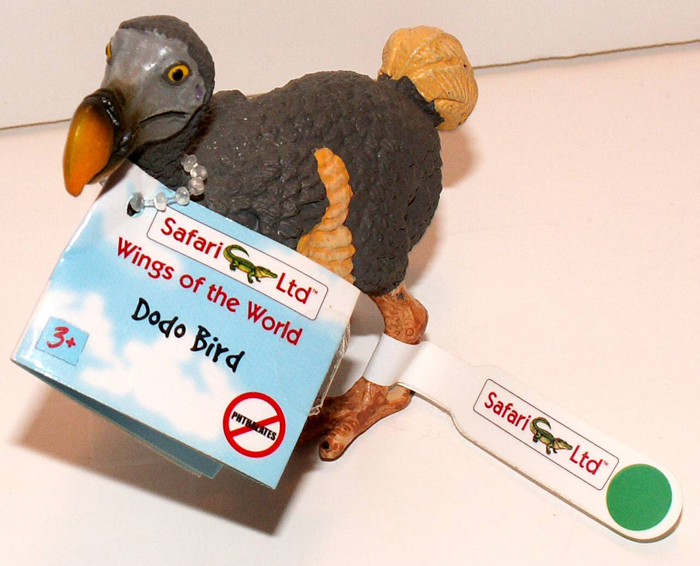
The Dodo is one of my favorite theropod dinosaur decedents and I can’t help but think from time to time about how horrible the extinction of the dodo was. When I found out that Safari was making a dodo replica as part of their great Wings of the World Collection, I had to get it immediately and the figure does not disappoint. This dodo bird is one of their greatest creations ever, bar none!
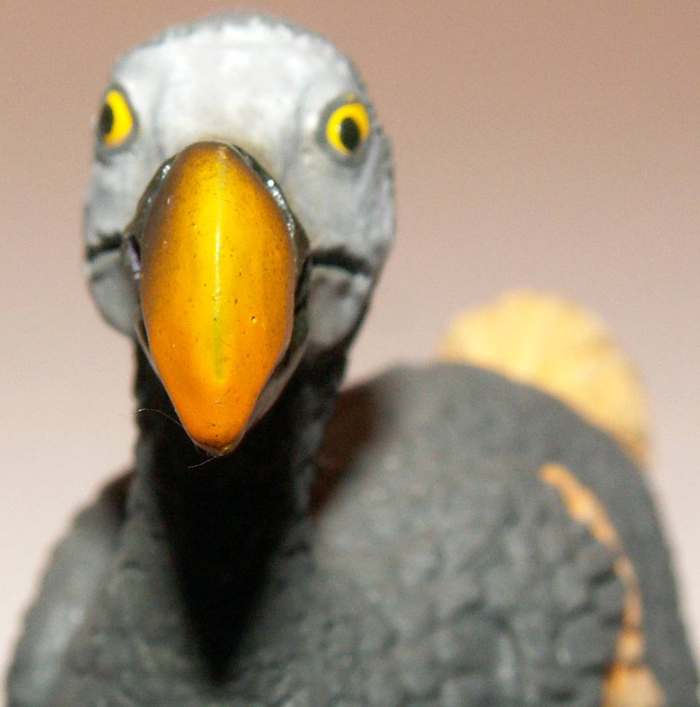
The sculpting of this figure is just incredible, it is the most realistic replicas I have seen to date. From the top of the head to the end of the short tail, it is covered in feathers and the body is plump or obese. The feathers have a lot of texturing and they look ruffled, fluffy and soft. The wings are very short and folded on the sides the rib cage. The tail is short with longer but curly tufts and fluffy feathers over it and hanging down slightly from it. The feathers on the ends of the little wings and those on the end of the tail are the most distinctive of all of the feathers on the bird’s body, as well as being the longest and thickest.
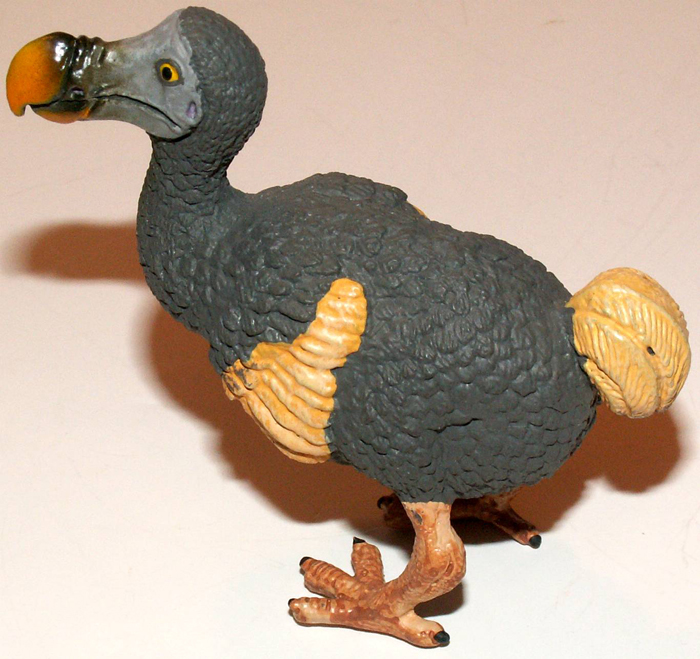
The bird’s head is absolutely gorgeous. From the front of the cranium to the lower jaws consists of bare skin and beak. The entire bill is large and very thick with a rough skin region of the upper bill. The lower and upper beak or bill has a hooked point at both ends. The sculpted nostrils are accurately positioned on the sides of the beak and the inner ears or ear holes are sculpted below the eyes. The fantastic, large eyes face forwards, almost providing binocular vision. The legs are very scaly and the anisodactyl beast feet are accurate. The feet are turned in or pigeon toed, but the figure does stand up fine on a level surface.
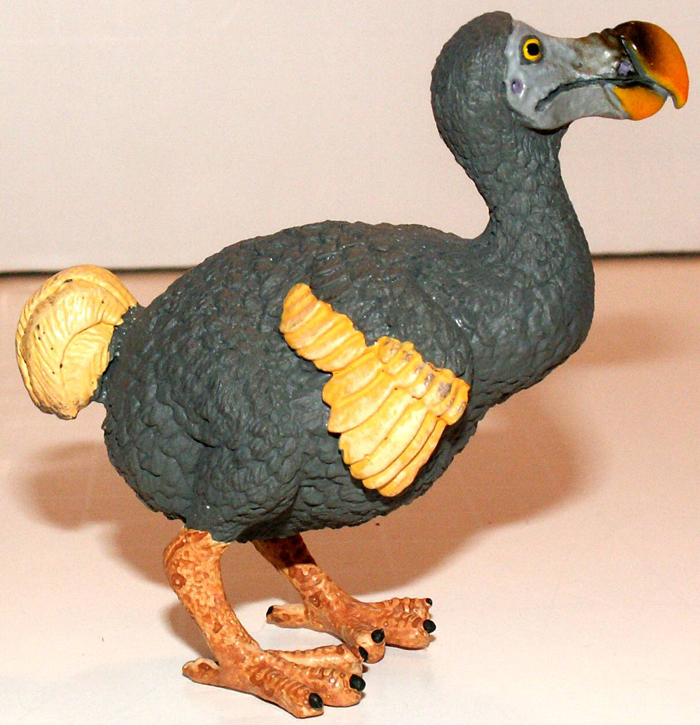
On the stomach there is some sculpted words that read: “Dodo Bird © Safari Ltd. Miami Florida Made in China C6”. I really like it when a company sculpts the information on a figure and I like how Safari sculpts the name of the figure, it’s a nice touch. The sculpting is just completely extraordinary and is so life-like!
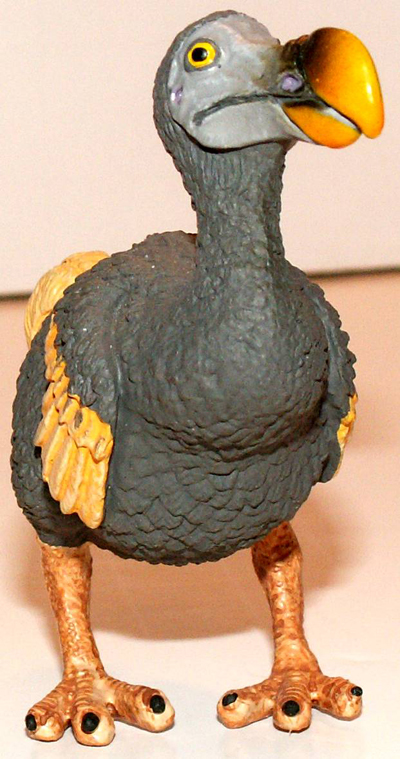
The painting is also very good. The overall color of the figure is gray, with light gray on the body and dark gray for the head. The dodo’s eyes are absolutely perfect, yellow on the outside and black pupils. The upper beak has a brief black part at the base, but the bill and hooks are mostly dark orange. The nose and ear holes are a somewhat dark purple color. Dark yellow for the wing feathers and tail and a medium tinted orange for the legs and black for the talons or claws. There are only a few tiny black spots of paint that got on to areas it shouldn’t have, such as the tail.
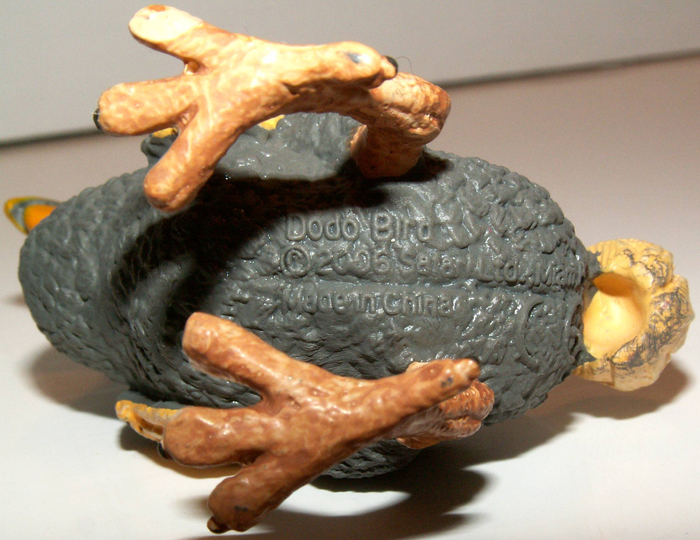
The dodo bird replica is nearly three inches long and high (2.75″ L x 2.75″ H). It does not have any packaging whatsoever but only a plastic bag, however, it does have a small removable plastic stand around the feet. It also comes with a small booklet containing a very brief history of the animal. Overall, this dodo bird figure is marvelous and I feel fortunate to own such a historical piece. While I’ll never see or hold a living, breathing dodo Bird, this replica is as close as I’ll ever get to one. It’s quite a pleasure to look at because I know how it really was and it makes me appreciate the species even more. I strongly recommend this replica to anyone with a passion for the dodo. like I do because it is just such an honor to own!
You can purchase this great Dodo Bird replica from Amazon here, or directly from Safari here.
Disclaimer: links to Ebay and Amazon on the AnimalToyBlog are affiliate links, so we make a small commission if you use them. Thanks for supporting us!




If the dodo was a related to doves than it would have def been the largest. Right now the biggest is the Victoria Crowned Pigeon and its much smaller than the dodo.
A cool review of an unusual animal and figure!
Unfortunately, some old life drawings from Mauritus showed the real life dodo was much more slender; the ones that were the “classic” plump style were animals that were overfed on sea voyages back to Europe, meaning the ones that were painted were obese Xmas turkeys compared to their real incarnations. Real ones looked a bit like a dwarf version of a phorusrhacid – big head, roung body with a slender “undercarriage”.
[…] terms) and entirely human-induced. I plead a precedent having already been set here with the Safari dodo, and the fact that this review has been sanctioned by our blog master himself. So […]